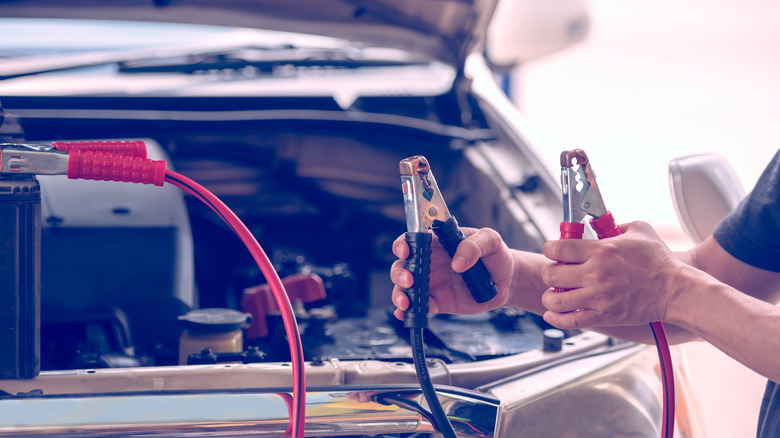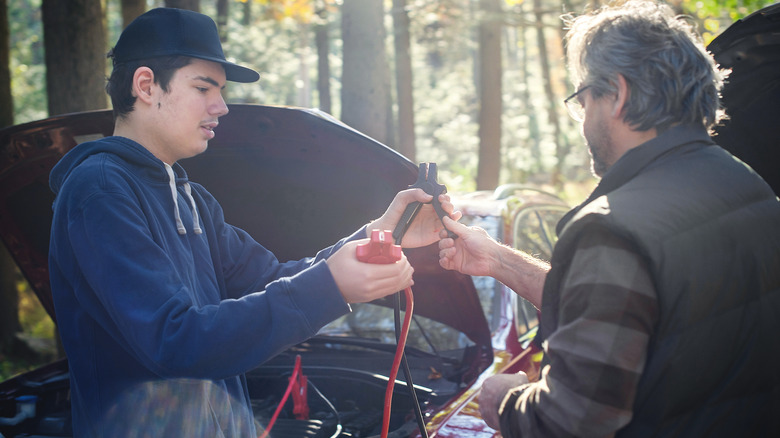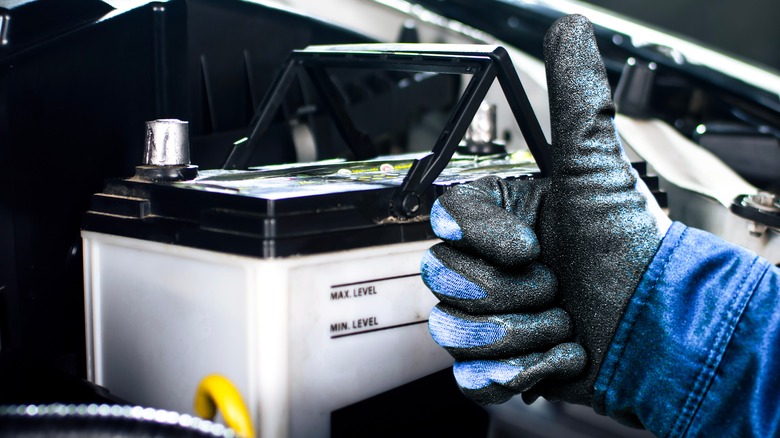How To Disconnect Jumper Cables: The Right Order To Remove Them
Your vehicle's battery is a vital but often forgotten car component. Even more, not every product is created with the same level of quality, performance, and operational life, especially when looking at major car battery brands. On average, a car battery will last around three to five years, and beyond that, you're likely on borrowed time. For added peace of mind, there are tools you can keep in your car if you're worried about a dead battery.
However, many motorists do store a pair of jumper cables in their vehicle and will likely help you if you ask. However, you may not know how to safely add and remove jumper cables, and if done incorrectly, it can create sparks, which in rare cases could lead to an explosion. That said, there's no need to fear connecting and disconnecting jumper campers because the correct process is very simple. The biggest thing is just making sure that your jumper cables are in good condition — meaning there is no corrosion on the clamps, fried wires, or missing insulation.
Each step to disconnect jumper cables in the correct order
If you feel less than confident about your level of automotive knowledge, don't feel discouraged — you're not alone. A 2018 survey of 2,000 U.S. drivers revealed that only around 47% of respondents were exceedingly sure of themselves when jump starting a car. However, you'll first want to follow our guide on how to properly jump a car battery before knowing how to remove the cables.
After the dead battery has been charged and the engines are still running on both vehicles, follow the steps below to safely remove the jumper cables from the previously dead vehicle.
- Disconnect the black clamp from the previously dead car, which should be attached to a bare metal area of the chassis (not the battery's negative terminal).
- Then remove the red clamp attached to the previous dead battery's positive terminal.
- Make sure you're holding the red and black clamps apart, otherwise you'll create sparks. Gently set them on the ground away from each other.
- Now move over to the good battery and release the red clamp from the positive terminal and then the black clamp.
Afterward, because neither of the clamps are connected to a battery, you can safely put them away. The clamps can touch at this point.
What can you do to help keep your car battery charged?
Certain conditions are hardest on your vehicle battery, such as severe outdoor temperatures, certain driving habits, and maintenance neglect. Fortunately, you can help mitigate these factors and potentially lengthen your battery's lifespan.
If you live in a region that experiences harsh winter weather, those cold temperatures slow down the reactions of chemicals inside the battery, making it work harder. You might consider a product like a car battery blanket, which you might need this winter. Conversely, those living in areas where the summers feature scorching hot days will need to make an effort to find shade for their car. A battery that gets too hot has a tough time maintaining a charge, as the chemical reactions inside don't interact properly like they do in moderate temperatures.
For the sake of your battery, you should also avoid traveling very short distances in your car. A battery requires time after you've started your engine to completely charge. By taking frequent trips under 10 minutes, the battery never achieves a charged state, ultimately shortening its lifespan. While it's easy to forget to inspect your car battery regularly, it's important in order to identify issues before they become worse. For example, corrosion can form around the battery terminals and begin interfering with the charging process. You can consider a battery terminal cleaning kit to help break down and brush off corrosive material.


